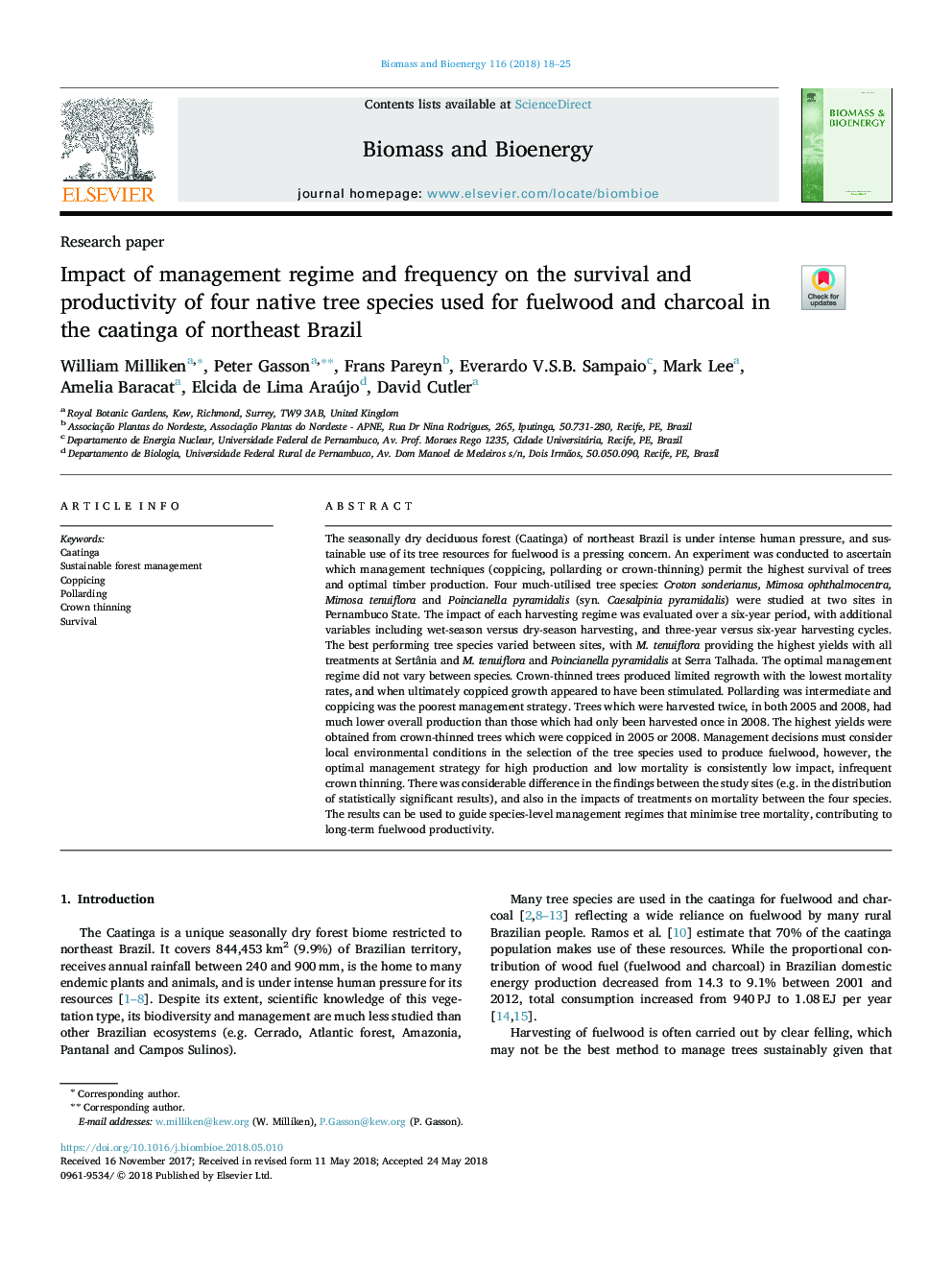| کد مقاله | کد نشریه | سال انتشار | مقاله انگلیسی | نسخه تمام متن |
|---|---|---|---|---|
| 7062815 | 1459777 | 2018 | 8 صفحه PDF | دانلود رایگان |
عنوان انگلیسی مقاله ISI
Impact of management regime and frequency on the survival and productivity of four native tree species used for fuelwood and charcoal in the caatinga of northeast Brazil
دانلود مقاله + سفارش ترجمه
دانلود مقاله ISI انگلیسی
رایگان برای ایرانیان
کلمات کلیدی
موضوعات مرتبط
مهندسی و علوم پایه
مهندسی شیمی
تکنولوژی و شیمی فرآیندی
پیش نمایش صفحه اول مقاله

چکیده انگلیسی
The seasonally dry deciduous forest (Caatinga) of northeast Brazil is under intense human pressure, and sustainable use of its tree resources for fuelwood is a pressing concern. An experiment was conducted to ascertain which management techniques (coppicing, pollarding or crown-thinning) permit the highest survival of trees and optimal timber production. Four much-utilised tree species: Croton sonderianus, Mimosa ophthalmocentra, Mimosa tenuiflora and Poincianella pyramidalis (syn. Caesalpinia pyramidalis) were studied at two sites in Pernambuco State. The impact of each harvesting regime was evaluated over a six-year period, with additional variables including wet-season versus dry-season harvesting, and three-year versus six-year harvesting cycles. The best performing tree species varied between sites, with M. tenuiflora providing the highest yields with all treatments at Sertânia and M. tenuiflora and Poincianella pyramidalis at Serra Talhada. The optimal management regime did not vary between species. Crown-thinned trees produced limited regrowth with the lowest mortality rates, and when ultimately coppiced growth appeared to have been stimulated. Pollarding was intermediate and coppicing was the poorest management strategy. Trees which were harvested twice, in both 2005 and 2008, had much lower overall production than those which had only been harvested once in 2008. The highest yields were obtained from crown-thinned trees which were coppiced in 2005 or 2008. Management decisions must consider local environmental conditions in the selection of the tree species used to produce fuelwood, however, the optimal management strategy for high production and low mortality is consistently low impact, infrequent crown thinning. There was considerable difference in the findings between the study sites (e.g. in the distribution of statistically significant results), and also in the impacts of treatments on mortality between the four species. The results can be used to guide species-level management regimes that minimise tree mortality, contributing to long-term fuelwood productivity.
ناشر
Database: Elsevier - ScienceDirect (ساینس دایرکت)
Journal: Biomass and Bioenergy - Volume 116, September 2018, Pages 18-25
Journal: Biomass and Bioenergy - Volume 116, September 2018, Pages 18-25
نویسندگان
William Milliken, Peter Gasson, Frans Pareyn, Everardo V.S.B. Sampaio, Mark Lee, Amelia Baracat, Elcida de Lima Araújo, David Cutler,